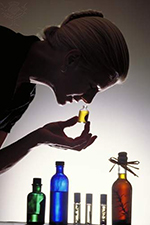Aromatherapy Is a Complementary Modality

Ellen LaDieu, MS, RN, CNE
Lead Faculty Program Director
Certified Clinical Aromatherapist (CCAP)

Aromatherapy has been a long-standing healing method. It is a growing holistic modality recognized and used by nurses worldwide in many health care settings.
Long ago plants were used to produce medicines; plants are also the source of essential oils. The nurse uses essential oils to affect a change in people to help them manage symptoms and enhance health. Essential oils harvested from plants are 100 percent pure and quite potent. Different oils have different chemical proprieties and selection of an appropriate oil for a particular symptom is based upon much more than the aroma or smell.
When considering the use of essential oils, it is vital to know the chemical name and the associated proprieties. For example, Lavendula angustifolia is one of three or more standard varieties of lavender. This variety is relaxing and calming. Another is stimulating and will help a person expectorate sputum associated with a respiratory cold for example.
Consulting with an educated aromatherapist is the best way to identify a safe oil for use. At times, traditional medications may need adjustment based on essential oil use; this is also true in the reverse. Essential oils work as they are inhaled or absorbed primarily through the skin. In Europe, aromatic medicine is practiced, and physicians order essential oils to be administered by mouth.
Essential oils can help with pain relief, healing of skin breaks and lesions, sleep, nausea, and anxiety to name a few symptoms or concerns. Aromatherapy can be a pleasant, effective method of reducing stress as well as improving health in many ways.
CREDIT
Will & Deni McIntyre / Photo Researchers / Universal Images Group


